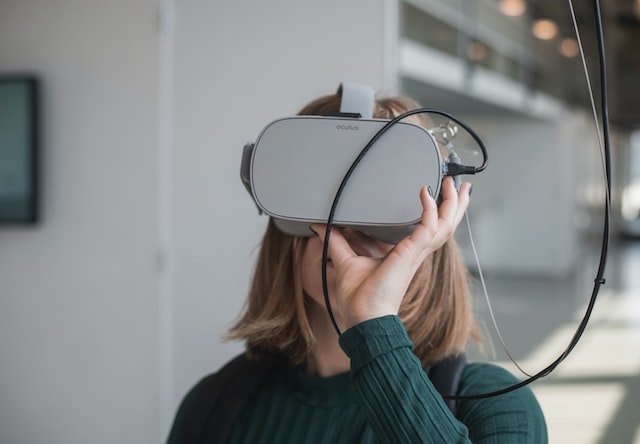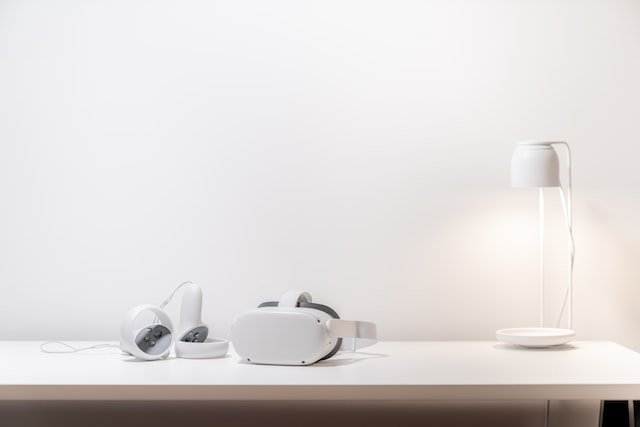With VR and AR, students can travel to places they have never been. They can practice real-life situations in a safe environment. And even collaborate with classmates in a virtual setting!
If you’re a student struggling to write a term paper, VR and AR can also be useful tools for research and writing. With VR, you can travel to historical sites or other locations relevant to your topic to gain a deeper understanding of the subject matter. AR can also be used to provide additional information and context to your research materials.
And if you’re still struggling, there are many professional writing services. They can “write a term paper for me,” allowing you to focus on learning and understanding the material. These services employ writers with expertise in a variety of subjects to provide customized writing services tailored to your specific needs.
In this article, we will explore how VR and AR can be used to enhance learning and education. And also we will provide unique tips for students who want to incorporate these technologies into their own learning experience.

7 Ways VR and AR Can Be Used to Enhance Your Learning
-
Discover new places
With VR and AR, we can travel to places we have never been before, like a historical site or a foreign country, without leaving our classroom. This helps us to understand and remember what we learn better than traditional methods.
-
Visualize
In science class, we can use VR to explore the human body or see how gravity works. In math class, we can use AR to see and understand geometric shapes. This helps us to visualize and understand complex concepts that are hard to learn from textbooks and lectures.
-
Collaborate
Working together with classmates is important for our learning, and VR/AR can help us collaborate better. We can work together in a virtual environment and learn how to communicate and work as a team. Teachers can also create lessons that allow us to work together on group projects, which makes learning more fun and interactive.
-
Study safely
Safety is important in education, and VR and AR provide a safe environment for us to learn and practice real-life situations without any risk. Medical students can practice surgeries. Emergency responders can practice responding to natural disasters. This allows us to learn and make mistakes without putting ourselves in danger.
-
Erase the borders
VR and AR can also help students with learning disabilities. For example, students with dyslexia can use AR to make the text more accessible. Students with autism can use VR to practice social skills. This helps to make learning easier and more accessible for all students, no matter what their abilities are.
-
Get a customized curriculum
Teachers can also use VR and AR to create customized lessons that fit each student’s individual needs. For example, a student who struggles with math can use AR to see concepts in a more accessible way. A student who is good at science can use VR to learn complex scientific concepts in-depth.
-
Practice a new language
Learning a new language can also be more fun and engaging with VR and AR. With VR, we can practice speaking and listening to a language in a natural setting, like ordering food at a restaurant. AR can also be used to create interactive language exercises that give us feedback in real-time.

How to Use VR and AR in Education?
- Research VR and AR apps and programs that are specifically designed for education. Many apps and programs can be used to supplement classroom learning. For example, Google Expeditions, AR Flashcards, and Anatomyou VR.
- If your school doesn’t have access to VR or AR technology, look for local libraries or community centers that offer these resources. Many libraries have started to offer VR and AR technology for public use, so it’s worth checking if there are any options in your area.
- Try creating your own VR or AR project as a way to learn and understand a specific topic. You can use free resources like Google Poly and Sketchfab to create 3D models and then use AR or VR technology to bring them to life.
- If you’re using VR or AR for language learning, try using it to connect with native speakers of the language you’re learning. There are many VR apps and programs available that allow you to chat with people from around the world in a virtual environment.
- Remember to take breaks while using VR or AR technology. Although it’s an exciting way to learn, it can also be overwhelming to be fully immersed in a virtual environment for long periods. Take breaks and step away from technology to give your brain a rest.
By incorporating these tips, students can maximize the benefits of VR and AR technology. They will enhance their learning and education in unique and exciting ways.
To Conclude
Virtual Reality and Augmented Reality are rapidly becoming popular tools for enhancing learning and education. These technologies offer unique opportunities for students to explore, experiment, and engage with the material in ways that traditional classroom settings cannot match.
The possibilities for using VR and AR in education are endless. By incorporating these technologies into the learning experience, students can develop new skills and insights.
As with any technology, it’s important to use VR and AR responsibly. Take necessary precautions to ensure safety and minimize negative side effects. With proper usage, however, VR and AR can revolutionize the way we approach education and make learning more interactive, engaging, and enjoyable.
